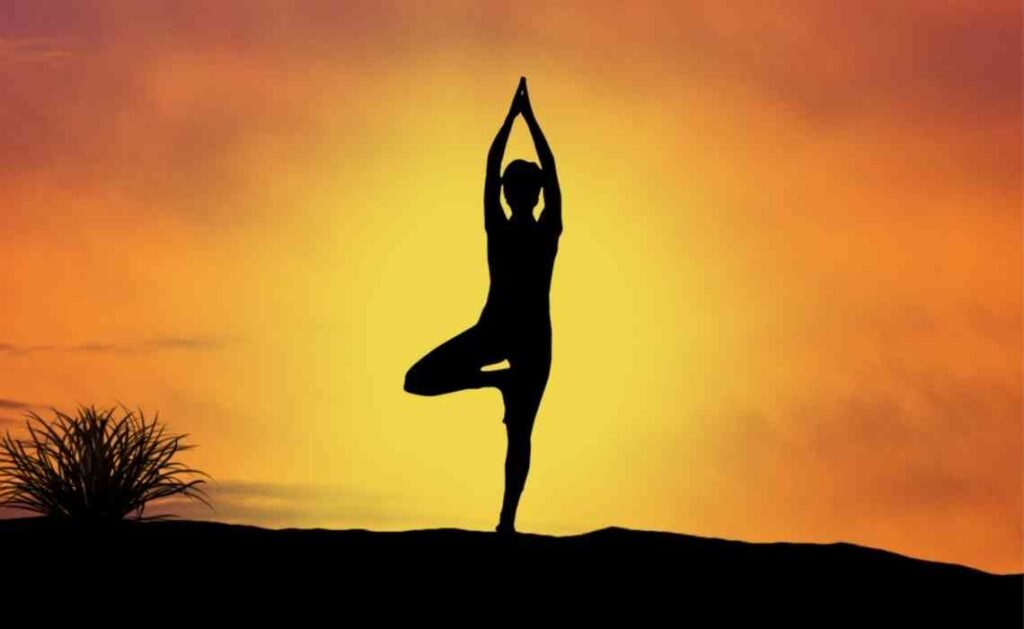
What Are the 8 Yoga Styles Names? Discover Their Meaning and Benefits
Yoga has been around for thousands of years, and it is more than just stretching or sitting quietly. Yoga is a whole way of living that connects your body, mind, and spirit. Today, there are many types of yoga, but originally, there were 8 important styles or paths. In this post, we will talk about “what are the 8 yoga styles names,” explain each one clearly, and help you understand them in a very simple way.
1. Hatha Yoga

Hatha Yoga is the style most people imagine when they hear the word “yoga.” It focuses on physical postures, called “asanas,” and breathing exercises, known as “pranayama.” The word “Hatha” means “force” in Sanskrit, which shows that it takes effort and discipline. In Hatha Yoga, you learn to control your body through movements and stretches. It helps you feel stronger, more flexible, and calmer inside.
2. Raja Yoga

Raja Yoga is often called the “royal path” of yoga. It focuses mainly on controlling the mind and achieving deep meditation. The word “Raja” means “king,” and this style is seen as a very noble way to reach inner peace. Practicing Raja Yoga involves quieting your thoughts, sitting still, and concentrating deeply. It teaches that mastering your mind is like becoming a king of your own inner world.
3. Karma Yoga

Karma Yoga is all about action and selfless service. The word “Karma” means “action” in Sanskrit. This style teaches you to do good deeds without expecting any rewards. For example, helping someone without waiting for a thank-you is Karma Yoga in action. It reminds us that being kind and helping others brings peace and happiness to our own lives.
4. Bhakti Yoga

Bhakti Yoga is the path of love and devotion. It is about loving something greater than yourself, like a god, nature, or even all living things. The word “Bhakti” means “devotion.” People who practice Bhakti Yoga sing songs, chant prayers, and express their love in many beautiful ways. It teaches that love can heal the heart and bring people closer to true happiness.
5. Jnana Yoga

Jnana Yoga is the path of wisdom and knowledge. The word “Jnana” means “knowledge” in Sanskrit. This style of yoga is about asking big questions like “Who am I?” and “Why am I here?” It is not about reading lots of books but about deeply thinking and understanding the truth about life. Jnana Yoga helps people see beyond appearances and find their true self.
6. Tantra Yoga

Tantra Yoga is often misunderstood, but it simply means weaving together different parts of life to reach a higher state of awareness and “Tantra” means “to weave” or “expand.” It includes rituals, special breathing, meditation, and even chanting to connect body, mind, and spirit. Tantra Yoga teaches that everything in life, even everyday activities, can be spiritual when done with awareness.
7. Mantra Yoga

Mantra Yoga is the practice of repeating sounds, words, or phrases, called “mantras,” to focus the mind and bring about positive change and “Mantra” means “mind tool.” By repeating a word like “Om” or a special phrase, you can calm your thoughts and feel more peaceful. Mantra Yoga shows how powerful words and sounds can be in shaping our feelings and actions.
8. Kundalini Yoga

Kundalini Yoga is about awakening energy that is believed to sleep at the bottom of the spine. “Kundalini” means “coiled” like a snake. This style uses a mix of postures, breathing, chanting, and meditation to awaken that energy and move it up through the body. When this energy rises, people feel more alive, creative, and connected to the world around them.
More About the 8 Yoga Styles Names
Now that we have introduced the 8 styles, let us look a little deeper at how they are different and why they matter. Even though all the styles are different, they are like parts of a big tree. Each branch offers something special, but they all belong to the same tree called Yoga.
Some styles, like Hatha Yoga, focus mainly on the body. Others, like Raja Yoga and Jnana Yoga, are more about the mind and wisdom. Styles like Bhakti Yoga touch the heart, while Karma Yoga teaches the importance of our actions.
In modern times, most yoga classes you see at gyms or studios are based on Hatha Yoga, with some pieces of Raja and Tantra Yoga mixed in. However, traditional teachers still pass down all eight styles because together, they build a complete path to a happy and meaningful life.
Why Are the 8 Yoga Styles Important?
Understanding the 8 yoga styles names helps you choose the right style for yourself. Some people feel more peaceful when they move their bodies, while others feel better when they pray, think deeply, or serve others. Yoga is not about doing one thing perfectly. It is about finding your own path and growing in body, mind, and spirit.
If you are someone who likes action and helping others, you might enjoy Karma Yoga and If you love singing and feeling emotional connections, Bhakti Yoga could be your path. In case you enjoy thinking and asking questions, Jnana Yoga could open new worlds for you. There is no right or wrong choice — only the choice that feels right for you.
How Can You Start Practicing?
Starting with yoga can feel overwhelming because there are so many styles. Here is a simple tip: begin with Hatha Yoga. It helps you learn the basic postures and breathing techniques that form the foundation for all other types of yoga. As you become comfortable, you can explore meditation (Raja Yoga), acts of kindness (Karma Yoga), or chanting (Mantra Yoga).
You do not need special clothes, a fancy mat, or a lot of money. All you need is a little space, some time, and an open heart. Remember, yoga is not a competition. It is a personal journey.
Yoga is like a beautiful garden with different types of flowers. Each flower is different, but together, they create something magical. The 8 yoga styles names are like those flowers. Whether you choose to stretch your body, focus your mind, sing with devotion, act with kindness, ask big questions, weave life’s energies, chant positive words, or awaken your hidden energy, yoga has a path for you.
Start small. Be patient. Trust that every step you take brings you closer to a happier, more peaceful you.





